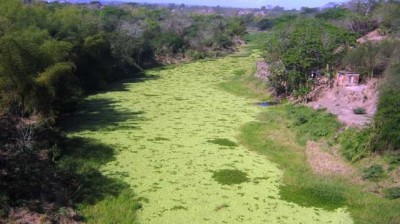A photo showing the dry bed of Cuba’s second largest river drove home just how chillingly severe our drought has become, to the point that I began to hope a tropical storm would come our way.
The storm that was on its way, which reached the category of hurricane and was named Danny, dissipated before hitting the Dominican Republic, and there is also little hope that tropical storm Erika will make it to our country.
The news of late is even less encouraging. Sancti Spiritus and Ciego de Avila are the provinces with the least amount of water on reserve (13 and 10 percent of full capacity, respectively) – they have practically NO water, as their reserves cannot be used for human or animal consumption.
Underground water reservoirs that replenish wells and other sources of water have also receded to levels that make this the most severe drought experienced in the last 112 years.
According to the Cuban Meteorology Institute, the provinces of Artemisa, La Habana, Santiago de Cuba and Guantanamo are the most severely affected. Reserves around the country are at around 35 percent of full capacity.
Meteoro, the regular military exercise organized by Cuba’s Civil Defense Department every year prior to the start of the rainy and hurricane season, was this year aimed at confronting the prolonged draught in the country.
The Meteorology Institute reports that the 2015 May-July quarter experienced a 68 percent rain deficit that affected the entire country.
Of the 124 municipalities affected by the drought, the 10 with the largest water deficits were: Nueva Paz, Colon, Jovellanos, Los Arabos, Pedro Betancourt, Perico, Union de Reyes, Ranchuelo, Najasa and Colombia.
Cuba’s severe water deficit during this quarter was the fourth largest figure for the 1961-2015 period.
At the close of the dry season this past April, Cubans still expected the rainy season (May-October) would bring the water needed for people, soils and animals.
The reports by local news programs have none of the habitual triumphalism, showing scrawny animals trying to rip the occasional leaf from a yellow and cracked soil.
Another problem affecting the country is the growing salinization of soils, particularly in coastal areas, coupled with plantings that have been postponed due to the water shortages, making the dry season even worse. According to experts, the drought conditions will continue till next year.

